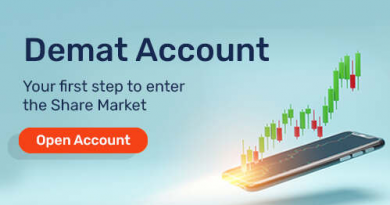What Is Sprint Tokenization?
What Is Sprint Tokenization?
Tokenization is a process by which physical assets—such as commodities, currency, or securities—are converted into units that can be traded and used in the same way as digital assets. This technology has many potential uses, but one of the most prevalent applications is in the financial world. By tokenizing physical assets, such as stocks and bonds, financial institutions can reduce risk and make more efficient use of resources. Sprint tokenization is a similar process that allows companies to tokenize their assets and create a secondary market for them. This allows businesses to raise capital easily and sell their assets quickly to investors. So what does this have to do with Sprint? Well, Sprint is using tokenization to turn its real estate holdings into digital tokens. These tokens will allow buyers and sellers to conduct transactions directly without having to go through a middleman. Learn more about sprint tokenization by reading our article!
Outline for keywords:
What is Sprint Tokenization?
The Benefits of Sprint Tokenization
How Sprint Tokenization Works
Implementation Challenges of Sprint Tokenization
Conclusion
What is Sprint Tokenization?
Sprint Tokenization is a process of turning raw data into objects that can be consumed and processed by the software. These objects are then stored in a secure, distributed ledger called a blockchain.
The advantages of tokenization are numerous: it enhances security, makes data more manageable, and reduces costs. Additionally, tokenization opens up new markets for businesses as well as new opportunities for consumer engagement.
The Benefits of Sprint Tokenization
Sprint tokenization is a process of creating a new digital asset that can be used as a medium of exchange for goods and services. The asset can be used to reduce the costs associated with conducting transactions, improve efficiency and security, and provide consumers with more choice.
Tokenization provides several benefits for businesses and consumers. For businesses, it reduces the costs associated with conducting transactions, improves efficiency and security, and provides consumers with more choice. For consumers, it allows them to use their assets in more ways than ever before, including using them as store of value or medium of exchange.
One of the main benefits of tokenization is that it can reduce the costs associated with conducting transactions. With Sprint tokenization, businesses can create a new digital asset that can be used as a medium of exchange for goods and services. This new asset can have lower transaction costs than traditional methods such as cash or cards because it doesn’t require any intermediary institutions like banks.
Tokenization also provides advantages for businesses in terms of security and efficiency. With tokens instead of regular currencies, businesses can create an immutable record of all transactions which makes them more secure. Additionally, tokens can be processed quickly and easily through smart contracts which means they can be executed quickly and efficiently without the need for third-party verification or confirmation . This leads to reduced processing times and improved transaction accuracy .
In addition to these benefits, tokenization also gives consumers more choice when it comes to how they use their assets.
How Sprint Tokenization Works
Sprint Tokenization is a process that allows for the conversion of physical assets into digital tokens. This allows for faster and more efficient transactions, as well as the potential for new and innovative applications. Tokens can be used in a variety of ways, including payments, rewards, and settlements.
Tokens are created through a process known as minting. This involves creating a smart contract that specifies how many tokens will be created, as well as the conditions under which they can be retrieved. Once created, tokens can be transferred between users or used to purchase goods and services.
Tokenization has several advantages over traditional forms of payment. For example, it is faster and more efficient because there is no need to transfer funds between parties. Additionally, tokenization offers the potential for new applications that cannot be implemented with traditional payment systems. For example, tokenized property could be used to track ownership or to create secure contracts between parties.
Implementation Challenges of Sprint Tokenization
Tokenization is a process of turning real-world assets into interchangeable digital tokens. This can be done through blockchain technology, which allows for secure, transparent and verifiable transactions.
While tokenization has many benefits, it also has several implementation challenges that need to be considered when implementing it. These include:
1) Legal considerations:
It’s important to ensure that the tokens being created are compliant with applicable law. This includes making sure that the tokens are not classified as securities or commodities, and that any associated regulations have been followed.
2) Security:
Tokens must be secure and resistant to fraud or unauthorized access. They should also be able to handle large amounts of traffic without experiencing any downtime or issues.
3) Scalability:
Tokens must be able to handle high volumes of traffic without breaking down. This means creating a system that can quickly generate new tokens, distribute them to users, and store them on the blockchain in a manner that is resilient to attacks.
Conclusion
Sprint has been working on a new kind of mobile payment system that it is calling “tokenization.” What this means is that instead of taking a photo of your driver’s license or other traditional form of identification, you will be able to use Sprint tokens to make payments. This is a great option for those who don’t have access to traditional forms of ID, as well as for customers who want more control over how their data is used. We’ll keep you updated on the progress of this exciting new technology as it moves forward.




